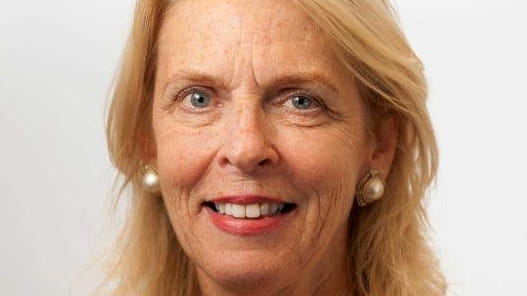Patronage reigns in judicial selection

Huntington District Court Judge Marian Tinari. Credit: Richard Slattery
Justice is blind.
But political patronage sure as heck isn’t.
So what are Suffolk residents to make of a Newsday report Sunday that shows the county’s judicial selection process to be pretty much a patronage mill? A complex web of a mill, with the machinations that virtually guarantee election of favored candidates.
One of the questions raised by the report:
Are judicial slots, like heirlooms, passed along to political “family” members?
In 2010, political leaders, in a rare move, agreed to give a District Court spot vacated by a Republican to a Conservative — with a promise that when the Conservative stepped down, the seat would revert to its “rightful” owner, the Republicans.
The deal went south, however, four years later after a Republican leader attempted to hold a Conservative leader to the agreement, according to the report. But that’s not the norm: Usually when judges of one party step down, they are replaced with judges of the same party, the report said.
Has a Tammany Hall-era reform — “fusion voting,” which was supposed to give minor political party candidates a boost against Republicans and Democrats — morphed into hard knots of cross endorsements that deny voters choice?
Marian Tinari, a Conservative married to county Conservative Chairman Frank Tinari, gained a six-year term as a District Court judge — even before elections were held last fall.
How did she pull off such a feat? Pay attention, now:
Tinari’s, husband, Frank, then the Huntington Conservative party leader, went to the Huntington Town Democratic leader, Mary Collins, with a deal. His party would back two Democrats in exchange for Democrats backing one Conservative candidate in 2014. The deal also called for the Democrats to endorse a Conservative judicial candidate in 2015, who would end up being his wife.
Talk about a long game.
In March 2015, Tinari was appointed to a vacancy on District Court to fill out the three-year term of a retiring judge; by November, her candidacy to a six-year term was bullet proof — with the her husband’s Conservative Party, along with Republican, Democrat, Independence and Reform, cross endorsing her candidacy.
Is it any wonder she had no challenger?
James Sample, a Hofstra University law professor who has studied judicial selection, best characterized such selection of judges. “It’s unseemly, it’s unbecoming; but it’s legal and business as usual for New York state judgeships,” he said.
But doesn’t Nassau do the same thing?
Well, yes — but not to the same degree — which keeps Nassau’s process political but not as hardened as Suffolk’s.
In Nassau, according to Newsday’s report, about 10 percent of judicial candidates in the past 10 years were cross endorsed by major parties; in Suffolk, the percentage is 25 percent — which would appear to give Nassau the more competitive system.
Except — as voters, no doubt, have noticed — that the rate of cross endorsements is accelerating for both counties. Between 1996 and 2005, one judicial candidate in Nassau and 31 in Suffolk were cross endorsed by major parties; in the past 10 years, the numbers jumped to 25 candidates in Nassau and 63 in Suffolk.
What happens come November?
Well, the parties will have made your selection for you, with cross endorsements for all four of Suffolk’s higher court spots — one County and three Family — that are up come Election Day.
And the mill grinds on.
